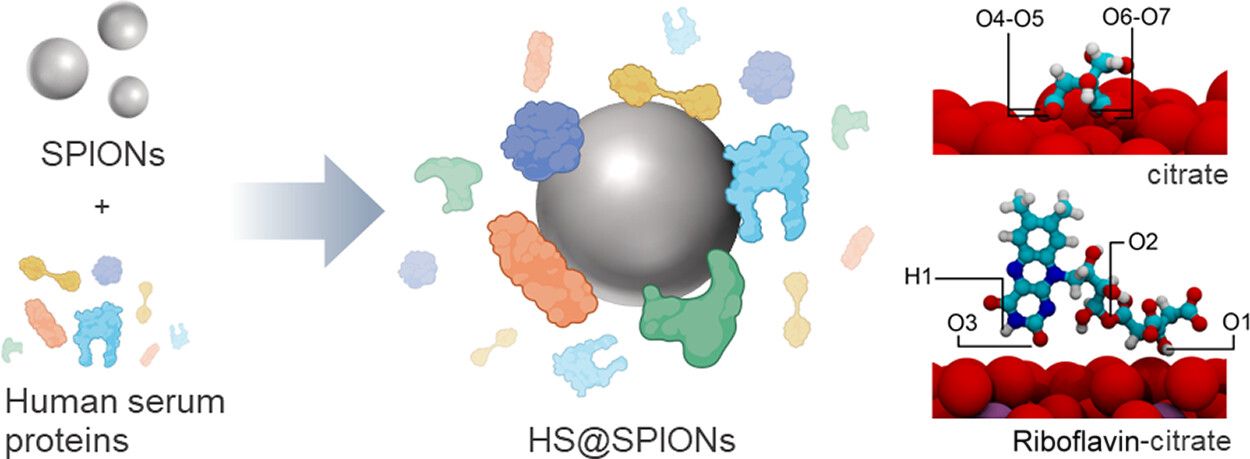
Hot off the press: New paper in ACS Applied Nano Materials!
The article “Proteomic Analysis and Molecular Dynamics Simulation of Riboflavin-Coated Superparamagnetic Iron Oxide Nanoparticles Reveal Human Serum-Derived Protein Coronas: Implications as Magnetic Resonance Imaging Contrast Agents” was published in The American Chemical Society: Applied Nano Materials!
Former NN group member Wid Mekseriwattana published this paper with the supervision of Anna Roig among others. In this article the protein coronas of bare, citrate-coated, and riboflavin-coated superparamagnetic iron oxide nanoparticles (SPIONs) formed with human serum were studied by proteomic analysis to identify and quantify the nanoparticle–protein interaction.
Abstract:
Superparamagnetic iron oxide nanoparticles (SPIONs) have been increasingly used as nanomedicine platforms due to their exceptional magnetic properties, which emerged from their nanoscopic sizes. Recently, SPIONs with a riboflavin (Rf)-citrate ligand were developed and showed increased internalization in breast cancer cells, with exceptional properties as T2 contrast agents for magnetic resonance imaging (MRI). The interactions of the Rf-coated SPIONs with proteins from fetal bovine serum (FBS) were previously characterized to understand how the nanoparticles will interact with biomolecules. To closer mimic the human biological environments, human serum (HS) has been suggested as a better model. Therefore, in this work, protein coronas of bare, citrate-coated, and Rf-coated SPIONs formed with HS were studied by proteomic analysis to identify and quantify the nanoparticle–protein interaction. The results were compared with the FBS-derived coronas to understand the differences in the protein corona formation from different serum origins. Furthermore, the interactions of the SPIONs with riboflavin carrier protein (RCP), which is a target protein for the Rf-SPIONs, were also studied. The overall physical properties of the corona proteins were similar between the FBS and HS groups, but some specific homologous proteins interacted differently. The RCP was found to bind more to the citrate-coated SPIONs than the Rf-coated one. The outcome could be explained by molecular dynamics simulation, where the orientation of the Rf ligand did not favor the binding with RCP. The simulation results also showed the influence of surface hydrophilicity of the SPIONs on the RCP interaction. The combined data from proteomic and simulation analyses suggested a way to improve the Rf ligand to enhance the interaction with RCP and reduce the interactions with the serum proteins, which could enhance the specific cellular interactions and improve the Rf-SPIONs as MRI contrast agents for breast cancer.
Anna Roig, breast cancer, iron oxide nanoparticles, magnetic resonance imaging, molecular dynamics simulation, protein corona, proteomics, riboflavin, Wid Mekseriwattana

